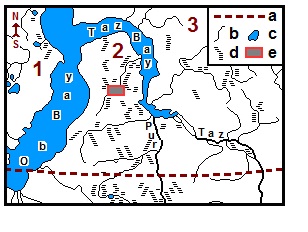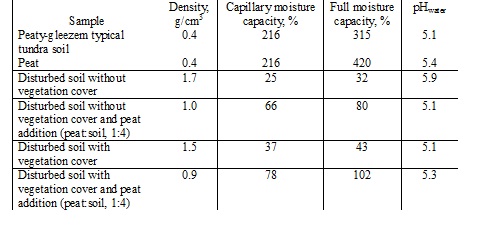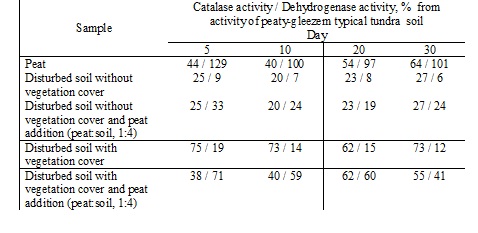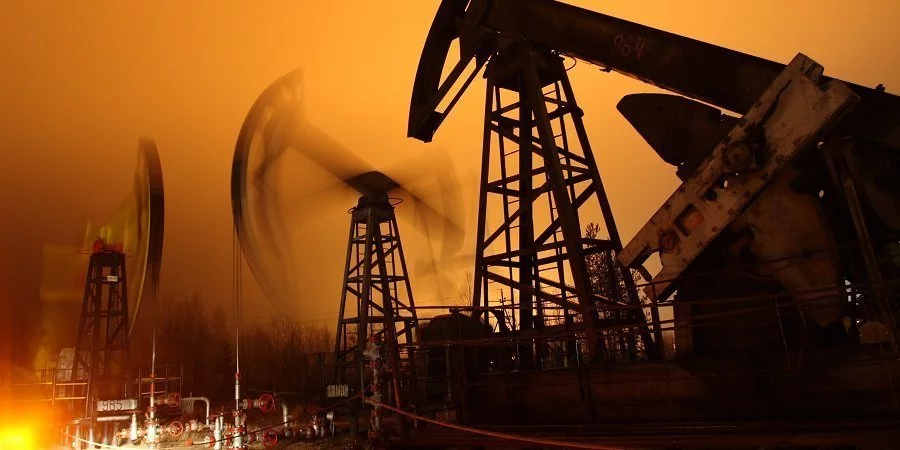The work was carried out within the framework of the topic of the Ministry of Science and Higher Education of the Russian Federation « Physicochemical and biogeochemical processes in anthropogenic contaminated soils» No. 0191-2019-0049.
Introduction
From the geoecological point of view, process of soil reclamation represents the restoration of its fertility lost due to various reasons to which it is possible to refer productive activity of the gas industry in the conditions of the Far North. This activity consists of conducting exploration works, arrangement and development of new fields, gas and gas condensate production and their preparation for transport. Very often this is accompanied with mechanical impacts on a soil-vegetation cover when tundra soils partially or completely lose a vegetation cover and an organogenic layer, and the mineral horizons come to a day surface. Nevertheless the soil has self-restoration in the form of regeneration of a vegetation cover, originally settling by the different types of perennial cereal grasses association not characteristic of the natural communities which subsequently are forced out by native for a tundra zone - mosses and lichens. However in the conditions of severe climate of the tundra about self-restoration of mechanically disturbed soils it will be possible surely to judge only decades later after the beginning of this process [1, 2]. It has been also shown that a local peat can by applied for stimulating the reclamation of mechanically disturbed soils in the northern impacted ecosystems. Accordingly, we need the express assessment of this process effectiveness in situ conditions.
Peat applying for mechanically disturbed soil reclamation is due to some reasons. First, this organogenic material consists both of partly decayed plant remains and specific products of their degradation, humus and humic acids, which are characterized by the high content of nutrients, especially nitrogen, up to 3.5%. Secondary, peat possesses a certain pool of various physiological groups of the microorganisms (ammonifiers-aerobes, sporous bacteria, oligonitrofila, fungi, nitrifiers, denitrifiers, butyric-acid bacteria etc.) participating in degradation of peat organic substance that makes available nutrient elements for plants [3].
As for key indicators of reclamation process, it is possible to refer activity of soil enzymes. This indicator differs in high sensitivity and expressivity, sufficient accuracy and stability of indices in comparison with the existing methods of microbiological analysis [4].
The specified geoenvironmental problem solved on the example of the mechanically disturbed tundra soils of the Taz peninsula (Yamalo-Nenets autonomous district, north of West Siberia, Russia) as region of productive activity of 100% subsidiary company of «Gazprom» PJSC - «Gazprom Dobycha Yamburg» LLC. As known the Taz peninsula is in the north of the West Siberian Plain between the Ob bay in the west and the Taz bay in the east (Fig. 1). The territory of the peninsula is on a relief flat, it is covered with lakes and swamps and has vegetation characteristic of the tundra. Historically this area also is used by local population for pasturable reindeer breeding. Researches of the last years showed existence of a problem of mechanically disturbed tundra soils on the Taz peninsula as a result of productive activity of «Gazprom Dobycha Yamburg» LLC [5].
 Figure 1. Map-scheme of the territory under study. 1 – The Yamal peninsula; 2 – The Taz peninsula (68○09' N, 76○02' E); 3 – The Gydan peninsula; а – The North Polar Circle, b – rivers, c – lakes, d - swamps, e – plot of mechanically disturbed tundra soil for reclamation.
Figure 1. Map-scheme of the territory under study. 1 – The Yamal peninsula; 2 – The Taz peninsula (68○09' N, 76○02' E); 3 – The Gydan peninsula; а – The North Polar Circle, b – rivers, c – lakes, d - swamps, e – plot of mechanically disturbed tundra soil for reclamation.
In this regard the main objective of work consisted in stimulation of the reclamation of mechanically disturbed tundra soils from the Taz peninsula by means of local peat use and an express assessment of this process effectiveness in the conditions in vitro with use a catalase and dehydrogenase enzyme activities as control of the soil reclamation process.
Materials and methods
Representative average samples (0-6 cm layer) of two mechanically disturbed tundra soils as the consolidated sand on granulometric composition were selected in the Taz peninsula on sites around the location of installations of the complex gas preparation providing a collection and processing of natural gas and gas condensate according to requirements of industry and state standards. On one site the vegetation cover was absent; on other site the fragmentary regeneration of a vegetation cover in the form of certain species of perennial cereal grasses association, as well as mosses was noted. Preliminary analyses showed that the content of organic carbon (C) in soil without vegetation cover was 0.2%, and with a vegetation cover – 0.9%. In experiences for soil reclamation, the local peat with 54% ash-content added to the soil in the ratio 1:4 (peat:soil). As a standard of peaty-gleezem typical tundra soil (0-10 cm layer) with 39% ash-content was used [6]. The short physicochemical characteristic of the studied samples of soils and peat is given in Table 1.

Table 1. Physicochemical characteristic of different soils and peat samples from the Taz peninsula
For assessment of the soil reclamation effectiveness, 50 g samples without addition and with peat addition, humidified to 70% of a full moisture capacity incubated in Petri's cups in the thermostat at a temperature 30ºС. In dynamics, i.e., on 5, 10, 20 and 30 days a catalase and dehydrogenase activity of samples from various experimental variants was analyzed by means of the gasometer and spectrophotometer methods, accordingly, presented in work [5].
Results and discussion
It is known that from the studied enzymes the catalase initiates degradation reaction of the hydrogen peroxide (H2O2) to water (H2O) and oxygen (O2), which is formed in the course of breath of soil organisms and as a result of various biochemical reactions of organic substances oxidation. The catalase activity of soils can be considered not only as an indicator of functional activity of microflora, but also testifies to a safety of enzymes in postmortal plant material [7]. As for the dehydrogenase, its role consists in dehydrogenation reaction catalysis, i.e. hydrogen splitting off, of the organic substances (carbohydrates, alcohols and organic acids) arriving with the vegetation remains. The regression analysis has revealed a high positive associativity (determination coefficient, r2 = 0.90-0.98) of catalase and dehydrogenase activities as linear function that consists in transfer of the hydrogen (H2) splitting off by dehydrogenase to air oxygen with formation of water and (or) hydrogen peroxide which subsequent degradation is carried out by a catalase.
The data of Table 2 show that closest to catalase activity of peaty-gleezem typical tundra soil (taken for 100%), was the corresponding activity of disturbed soil with a vegetation cover, which during observation made 62-75% that is higher than activity even of the peat used for soil reclamation.

Table 2. Dynamics of enzyme activity of the mechanically disturbed soils from the Taz peninsula at their reclamation by means of peat
It allows to draw a conclusion on a significant contribution of plants to soil biochemical activity through postmortal plant material, owing to the enzymes remaining in this matter. Apparently regeneration of a vegetation cover as self-restoration of the disturbed soil was diagnosed by increase in catalase activity. The other picture was observed in case of dehydrogenase activity. So, for the entire period of observation, peat addition significantly increased the dehydrogenase activity of disturbed soil without vegetation cover and, especially with a vegetation cover. Apparently effectiveness of the disturbed soils reclamation by means of peat addition was diagnosed by increase in dehydrogenase activity. As for dehydrogenase activity of peat, it not only reached the corresponding activity of peaty-gleezem typical tundra soil, but also in the first 5 days was 29% higher.
As the proof of adequacy of dehydrogenase activity use in the time of assessment of the disturbed soils reclamation effectiveness by means of peat addition, the results of correlation and regression analysis of experimental data are served. So, calculation of the coefficient of correlation (r) indicating the direction and degree of an associativity in signs variability has shown existence of strong essential correlation dependence between a dehydrogenase activity and density of various samples (r = - 0.95), a dehydrogenase activity and capillary moisture capacity (r = 0.95), and also a dehydrogenase activity and full moisture capacity (r = 0.95). The corresponding formulas of correlation dependence, i.e., the equations of linear regression allow judging how the productive sign (y) quantitatively changes at change of a factorial sign (x) on a unit of measure had the following appearance:
y = 76.9 - 44.4x; y = 2.74 + 0.28x; y = 7.71 + 0.15x.
As it has appeared, the less density of samples and respectively more their capillary and full moisture capacity determined substantially by an organic component of the used samples, the dehydrogenase activity is higher. It is confirmed by data of previous works [7, 8], where increase in dehydrogenase activity with increase of humidity in various soils was noted. The leading value of humidity in soil dehydrogenase activity is connected with the fact that moisture defines a normal physiological state of the microorganisms and plants producing enzymes in the soil and also supports enzymes and their substrata (carbohydrates, alcohols and organic acids) in a reactionary state.
Conclusion
Thus, biochemical activity analysis, i.e., catalase and dehydrogenase enzyme activity analysis were used as control, i.e., at assessment of reclamation effectiveness of the mechanically disturbed tundra soils from the Taz peninsula. The relevant results of in vitro experiments that were aimed to local peat application showed that catalase and a dehydrogenase activity analysis are fitting for express assessment of reclamation process. From our point of view, such in vitro experiments are the basis for the formation of biogeochemical technology for the reclamation of mechanically disturbed tundra soils [9].
References
1. Vasilevskaya V.D., Kirilishin V.V. Anthropogenic disturbances of soil cover in southern tundra of the Yamal and measures for their prevention // Bulletin of the Moscow university. Series 17. Soil Science. 1993. No. 4. P. 3-9.
2. Vasilevskaya V.D., Grigoriev V.Ya. Biological indicators of degradation and self-restoration of soil-vegetation cover of tundra // Siberian ecological journal. 2002. No. 3 (IX). P. 355-370.
3. Emelyanova T.Ya., Kramarenko V.V. Substantiation of studying technique of peat deformation properties taking into account change of its degradation extent // News of the Tomsk polytechnical university. 2004. No. 5 (307). P. 54-57.
4. Zvyagintsev D.G., Aseeva I.V., Babieva I.P., Mirchink T.G. Methods of Soil Microbiology and Biochemistry. Moscow: Moscow university, 1980. 224 p.
5. Bashkin V.N., Galiulin R.V. Geoecological Risk Management in Polar Areas. Cham: Springer Nature Switzerland AG, 2019. 156 p.
6. Khrenov V.Ya. Soils of Cryolithozone West Siberian: Morphology, Physicochemical Properties, Geochemistry. Novosibirsk: Nauka, 2011. 211 p.
7. Efremova T.T., Ovchinnikova T.M. Seasonal oxidoreductase activity of drained peat soils in connection with hydrothermal conditions of the environment // Siberian ecological journal. 2008. No. 3 (XV). P. 441-449.
8. Pavliuchuk Z., Aseeva I.V., Sudnitsyn I.I. Influence of potential (pressure) of soil moisture on dehydrogenase activity in soils // Bulletin of the Moscow university. Series 17. Soil Science. 1982. No. 2. P. 60-63.
Авторы:
Rauf V. Galiulin, Doctor of Science (Geography), Leading Scientific Worker of Institute of Basic Biological Problems of Russian Academy of Sciences
Vladimir N. Bashkin, Doctor of Science (Biology), Professor, Chief Scientific Worker of «Gazprom VNIIGAZ» LLC and Institute of Physicochemical and Biological Problems of Soil Science of Russian Academy of Sciences
Roza A. Galiulina, Scientific Worker of Institute of Basic Biological Problems of Russian Academy of Sciences



